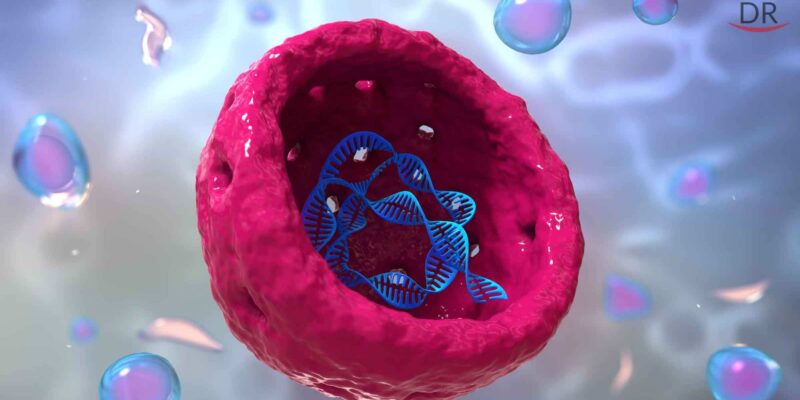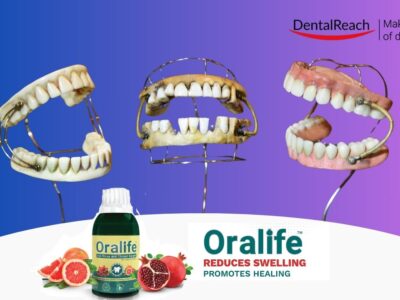ABSTRACT:
Oral Cancer has a remarkably high incidence worldwide and yet a a significant decrease in its mortality and morbidity rates has been established if it is diagnosed in early stages. There has been always a strong need to develop new, objective, non-invasive methods for its early detection. Micronucleus has come up in the recent past as a non-invasive biomarker for diagnosis of not only malignant and pre-malignant lesions but also many other significant diseases. Micronucleus (“MN”) is defined as microscopically visible, round or oval cytoplasmic chromatin mass next to the nucleus. Micronuclei (“MNi”) originate from aberrant mitoses and consist of eccentric chromosomes, chromatid fragments or whole chromosomes that have failed to be incorporated into the daughter nuclei during mitosis. The MN assay has been widely accepted as an in vitro genotoxicity test and a biomarker assay for genotoxic exposure and effect in humans. An attempt has been made to review the related studies, utilizing micronucleus assay of buccal mucosal cells as a novel marker of genotoxicity in head and neck region.
KEYWORDS: Micronucleus; micronuclei; micronucleus assay genotoxicity marker; biomarker.
INTRODUCTION:
The literal meaning of the word Micronucleus (MN) is describes it as a small nucleus in a large
cell, or the smaller nuclei in cells that have two or more such structures. Schmid (1975) defined MN as a microscopically visible, round or oval cytoplasmic chromatin mass next to the nucleus. MN is the name given to the small extranucleus that forms whenever a chromosome or a fragment of a chromosome is not incorporated into one of the daughter nuclei during cell division [1–4].
The two basic phenomena responsible for the formation of MNi in mitotic cells are dysfunction of the mitotic apparatus and chromosome breakage. Micronuclei (MNi) are formed from the whole chromosomes or chromatid fragments that lag behind in anaphase and are separated out from the daughter nuclei in telophase. Additionally, some MNi gets originated from fragments derived from broken anaphase bridges formed due to chromosome rearrangements such as dicentric chromatids, intermingled ring chromosomes or union of sister
chromatids [5–9]. In the course of telophase these chromosomal regions are included in the daughter cells where they can fuse with the main nucleus or can form one or more smaller secondary nuclei [8]. This smaller secondary nucleus is known as MN and its number can vary
from one to many. Now the MN formed can either go with the daughter nucleus they derive from or the other daughter nucleus. In the former scenario, neither of the daughter cells is aneuploid, and in the latter case the micronucleated cell has gained a chromosome, while its daughter cell has lost it [5,10].
MICRONUCLEUS ASSAY
The Micronucleus assay is defined as an investigative procedure carried out to analyze micronuclei quantitatively. It is one of the standard cytogenetic tools implemented to assess micronuclei formation (signifying chromosomal damage) subsequent to exposure to genotoxic/cytotoxic agents [11]. In humans, MN assay can be easily employed in lymphocytes, erythrocytes, and exfoliated epithelial cells (e.g. oral, urothelial, nasal) to obtain a measure of genome damage induced in vivo [12].
In the earlier times, once-divided cultured cells (mostly peripheral lymphocytes) were considered ideal for expressing MNi and the procedure used was known as cytokinesis-block micronucleus (CBMN) assay. In the CBMN assay, once divided cells are identified by their MBN appearance after blocking cytokinesis with cytochalasin-B (Cyt-B) [13]. In the last three decades, ever since the advent of MN assay on exfoliated cells, the buccal mucosal cells have completely replaced the usage of lymphocytes for the obvious reason of non-invasive collection of cells and simpler method for analyzing the MNi. The general genotoxicity results by both the methods of MN analysis are comparable [12].
The basal cells in the oral epithelium are the cells which possess the capability of mitosis, the new cells formed gets differentiated and mature as they migrate to the surface finally replacing the cells which are shed. Thus any genetic damage (expressed as MNi formation) instigated in these basal cells is reflected in the exfoliated cells; thus analysis of MNi in these cells can be correlated with the amount of genetic damage. As the oral epithelium acts as the first barrier for the inhalation or ingestion route and approximately 90% of cancers originate from epithelial cells, therefore, these cells represent a favored target site for early genotoxic events induced by carcinogenic agents entering the body via inhalation and ingestion. The procedure for MN assay has been summarized in Tables 1-3. Through this review, we intend to highlight the application of MN assay on buccal cells by reviewing significant studies from the English literature. We also aim to emphasize the pitfalls associated and the measures to overcome the same.
TABLE 1. THE PROCEDURE FOR MN ASSAY USING A CYTOSMEAR
- The subjects are asked to rinse their mouth with water and a cytobrush is used to obtain exfoliated cells from the oral mucosa.
- The samples are transferred to dry glass slides, to ensure an adequate harvest of cells.
- Smears are air dried and fixed with 95% ethanol spray.
- Smears are stained with either DNA specific or DNA non-specific stain.
- Smears are scored manually/digitally using a Tolbert (most accepted) criteria.
TABLE 2. STAINS COMMONLY USED FOR STAINING THE CYTOSMEARS FOR MN ASSAY
DNA specific stains:
- Feulgen Stain
- DAPI (4’,6-diamidino-2-phenylindole)
- Acridine orange
DNA non-specific stains:
- Giemsa stain
- May Grunwald-Giemsa stain
- PAP stain
- H & E stain
TABLE 3. FOR DESIGNATING AN EXTRA NUCLEAR BODY AS MICRONUCLEUS, THE FOLLOWING CRITERIA GIVEN BY TOLBERT IS APPLIED
- Rounded smooth perimeter suggestive of a membrane.
- Less than a third of the diameter of the associated nucleus, but large enough to discern shape and color.
- Staining intensity similar to that of the nucleus.
- Texture similar to that of nucleus.
- Same focal plane as nucleus.
- Absence of overlap with, or bridge to, the nucleus
In the early studies from the 1980s, exfoliated buccal mucosa cells were used to evaluate the
genotoxic effects of betel nuts and quids and of chewing tobacco. Most studies showed higher
MN frequencies at the site within the oral cavity where the quid or tobacco mixture was kept
compared to the opposite, control site. The MN assay in buccal cells was also used to study
cancerous and precancerous lesions and to monitor the effects of a number of chemopreventive agents. It is notable that the first studies of Stich and Rosin conducted between 1983 and 1984 had higher baseline MN frequencies than subsequent studies. This may have been due to a lack of defined scoring criteria and a relatively small number of scored cells (in some cases less than 500). Since then, published biomonitoring studies using the MN assay in buccal mucosa cells have investigated the effects of multiple factors including environmental and occupational exposures, radiotherapy, chemoprevention, vitamin supplementation trials, lifestyle habits, cancer, and other diseases [12].
2.1 MICRONUCLEI AS A NOVEL BIOMARKER
2.1.1 OCCUPATIONAL AND ENVIRONMENTAL EXPOSURES
In the last 15–20 years the MN assay has been applied to evaluate chromosomal damage for
biological monitoring of human populations exposed to a variety of mutagenic and carcinogenic chemical or physical agents. Significantly higher frequencies of MN have also been observed in exfoliated buccal cells from people exposed to organic solvents, antineoplastic agents, diesel derivatives, polycyclic aromatic hydrocarbons, lead containing paints and solvents, and drinking water contaminated with arsenic [12,13].
2.2 MN AND RADIATION
Ionizing radiation plays an important role in the treatment of many neoplasias, but it also produces genetic damage. As a consequence, secondary tumors may develop years after the
primary tumor treatment. Several studies evaluated MNi in buccal cells of patients undergoing radiotherapy in the head and neck region. The most striking increase in cytogenetic damage (150– 300 MN/1000 cells) was observedin an early study of three patients exposed to a cumulative dose of 3400–4000 cGy [12].
2.3 MN FREQUENCIES IN BUCCAL CELLS OF PATIENTS WITH SOME SPECIFIC DISEASES
A site-specificity was observed for Xeroderma pigmentosum patients, with a higher MN
frequency in cells from the dorsal tip of tongue, possibly due to greater light exposure. Down
syndrome was associated with a 733% increase in MNi in comparison to younger healthy
controls, and the MN frequency was 78.5% higher than in older controls. An increase in MN
frequency in buccal cells was reported for Diabetes mellitus with the patients having double
the level of genetic damage in comparison to matched controls and for treated pediatric
patients with ulcerative colitis in comparison with controls or children with Crohn’s disease [12].
Various studies have hypothesized that CBMN assay may provide an useful tool for screening of the obesity and metabolic syndrome and its progression to diabetes and cardiovascular disease in adults as well in children [12] and also demonstrated a strong association between HPV type infection and MN frequency [13].
2.4 LIFESTYLE AND HOST FACTORS
Lifestyle factors that are associated with genetic damage include smoking, alcohol consumption, and diet, especially vitamin deficiencies and supplementation. The majority of the studies
reporting a significant increase in MN in buccal mucosa cells related to a risk of oral cancer were
performed in subgroups of subjects with specific lifestyle habits, i.e. chewers of betel quids (areca nut, betel leaves, slaked lime and tobacco) from India, Taiwan and Philippines; reverse smokers (who hold the lit end of the cigarette inside their mouths) from India and Philippines; snuff dippers from Canada; users of Khaini tobacco (tobacco mixed with slaked lime) from India, and other similar practices [12]. The HUMN project is an effective vehicle for the development and implementation of an international collaborative validation effort to bring together the various buccal MN databases, and to identify and quantify the key variables affecting this biomarker [12].
CONCLUSION:
MN formation is generally considered as a manifestation of genetic damage or chromosomal breakage. Many investigators already and unequivocally have called MN as an upcoming marker of tumorogenesis. MN is thus a potential biomarker to screen genotoxicity, biomonitoring of various diseases, detection of malignancies and preneoplastic conditions and also a lot of other diseases. Since MN is a manifestation of day to day exposure to environmental pollutants,
infections, nutrition, radiation, foods, and the genetic make-up or ethnicity which again varies around the globe. So there must be an upper limit of the base-line MN frequency only beyond which we can label it as increased MN frequency.
REFERENCES:
- Stedman TL. Stedman’s Medical Dictionary. Baltimore, USA, Williams & Wilkins; 1995: twenty-sixth edition. Page: 1113.
- Belein MAJ, Copper PM, Braakhus MJB, Snow BG, Baak APJ. Standardization of counting micronuclei: Definition of a protocol to measure genotoxic damage in human exfoliated cells. Carcinogenesis.1995;16(10):2395-2400.
- Sivasankari PN, Kaur S, Reddy KS, Vivekanandam S, Rao RK. Micronucleus index: An early diagnosis in oralRamirez A, Saldanha PH. Micronucleus assay of alcoholic patients with oral carcinomas. Genetics and Molecular Research. 2002;1(3):246-260.
- Ford JH, Schultz CJ, Correll AT. Chromosome elimination in micronuclei: A common cause of hypoploidy. Am. J. Hum. Genet. 1988;43:733-740.
- Catala´n J, Falck GCM, Norppa H. The X chromosome frequently lags behind in female lymphocyte anaphase. Am. J. Hum. Genet. 2000;66:687–691.
- Falck GCM, Catala´n J, Norppa H. Nature of anaphase laggards and micronuclei in female cytokinesis-blocked lymphocytes. Mutagenesis. 2002;17(2):111-117.
- Cimini D, Fioravanti1 D, Salmon ED, Degrassi1 F. Merotelic kinetochore orientation versus chromosome monoorientation in the origin of lagging chromosomes in human primary cells. J Cell Science. 2002;115:507-515.
- Sarto F, Finotto S, Giacomelli L, Mazotti D, Tomanin R, Levis AG. The micronucleus assay in exfoliated cells of the human buccal cells. Mutagenesis. 1987;2(1):11-
- Garaj-Vrhovac V, Gajski G, Ravlic S. Efficacy of HUMN criteria for scoring the micro nucleus assay in human lymphocytes exposed to a low concenteration of p’ p’- DDT. Braz J Med Biol Res. 2008;41(6): 473-476.
- Fenech M, Holland N, Chang WP, Zeiger E and Bonassi S. The HUman MicroNucleus Project— An international collaborative study on the use of the micronucleus technique for measuring DNA damage in humans. Mutat Res. 1999;428:271–283.
- Bonassi S, Fenech M, Lando C, Lin Y, Ceppi M, Chang WP, et al. Human MicroNucleus Project: International database comparison for results with the cytokinesis-block micronucleus assay in human lymphocytes: I. Effect of Laboratory Protocol, Scoring Criteria, and Host Factors on the Frequency of Micronuclei.
- Environmental and Molecular Mutagenesis. 2001;37:31-4514. Heddle JA, Fenech M, Hayashi M, MacGregor JT. Reflections on the development of micronucleus assays. Mutagenesis. 2011;26(1):3–10.
- Fenech M, Holland N, Zeiger E, Chang WP, Burgaz S, Thomas P, et al. The HUMN and HUMNxL international collaboration projects on human micronucleus assays in lymphocytes and buccal cells— past, present and future. Mutagenesis. 2011;26(1):239–245.




















Comments